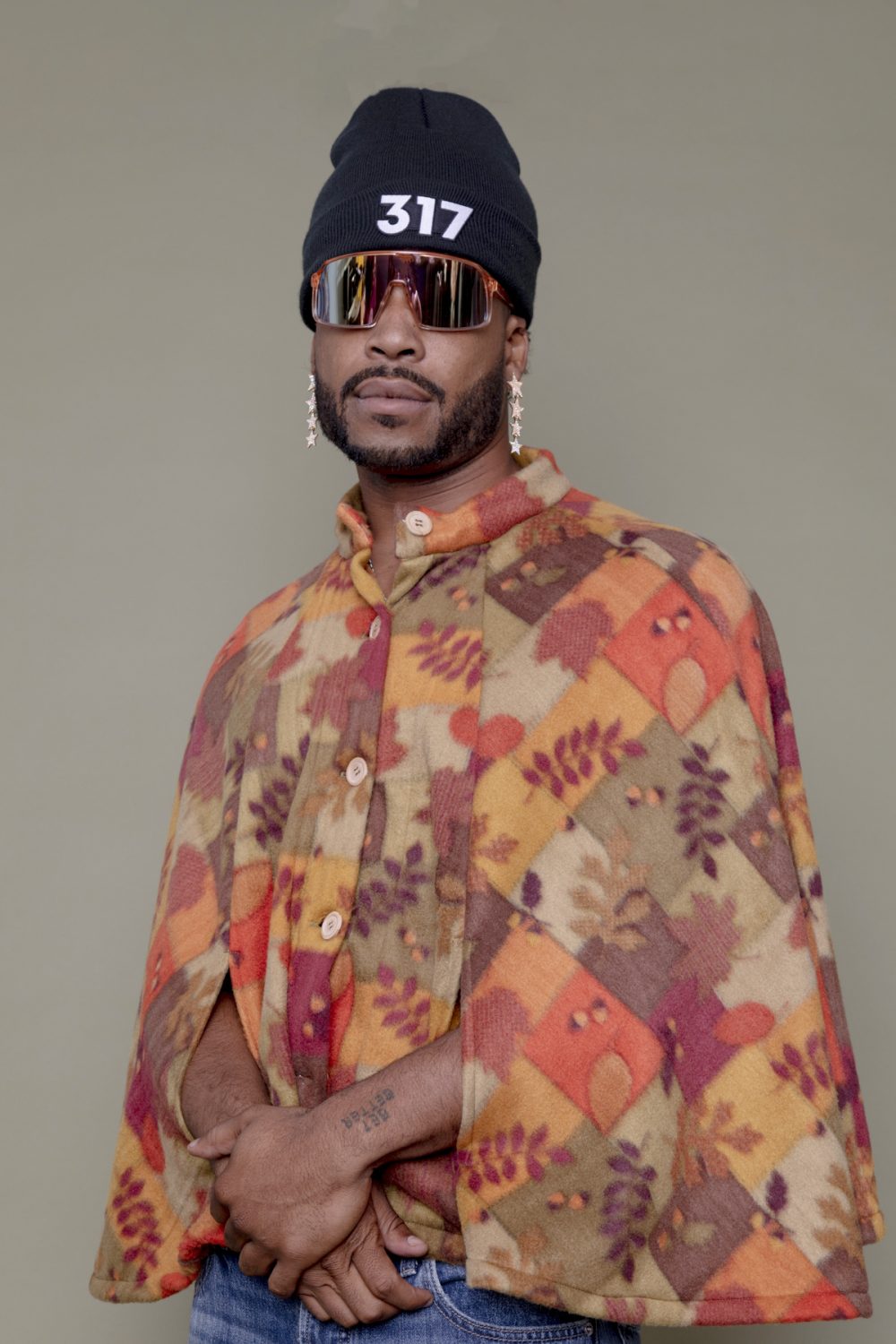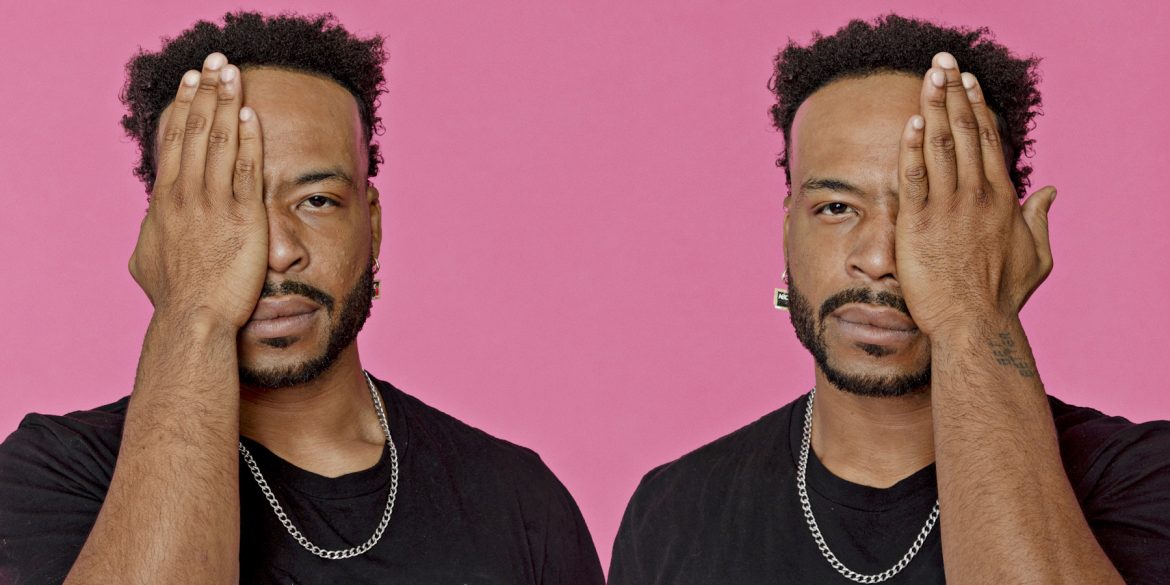Indiana is full of rich history that spans many different cultures. Sampson Levingston is delivering these histories through different perspectives and stories. His brand, Through2Eyes, run by Levingston himself and Hanna Leach, hosts Walk And Talk tours, Hawk And Talks at schools, and speaking engagements at events like fundraisers and retreats.
Levingston has an energy that can make anyone excited about history. He leads with enthusiasm and a curious attitude that will lure in anyone. Recently, Levingston partnered up with Sofar Sounds and the Skyline Club. He gave a brief tour of the avenue followed by a social hour before the musicians started. Be on the lookout for more events like this! He will also kick off his first year of Walktober—a tour of Irvington’s best houses for the spooky season on October 27th. Want to know how Walk And Talks started and how he keeps a class full of elementary students excited about history? We did too.
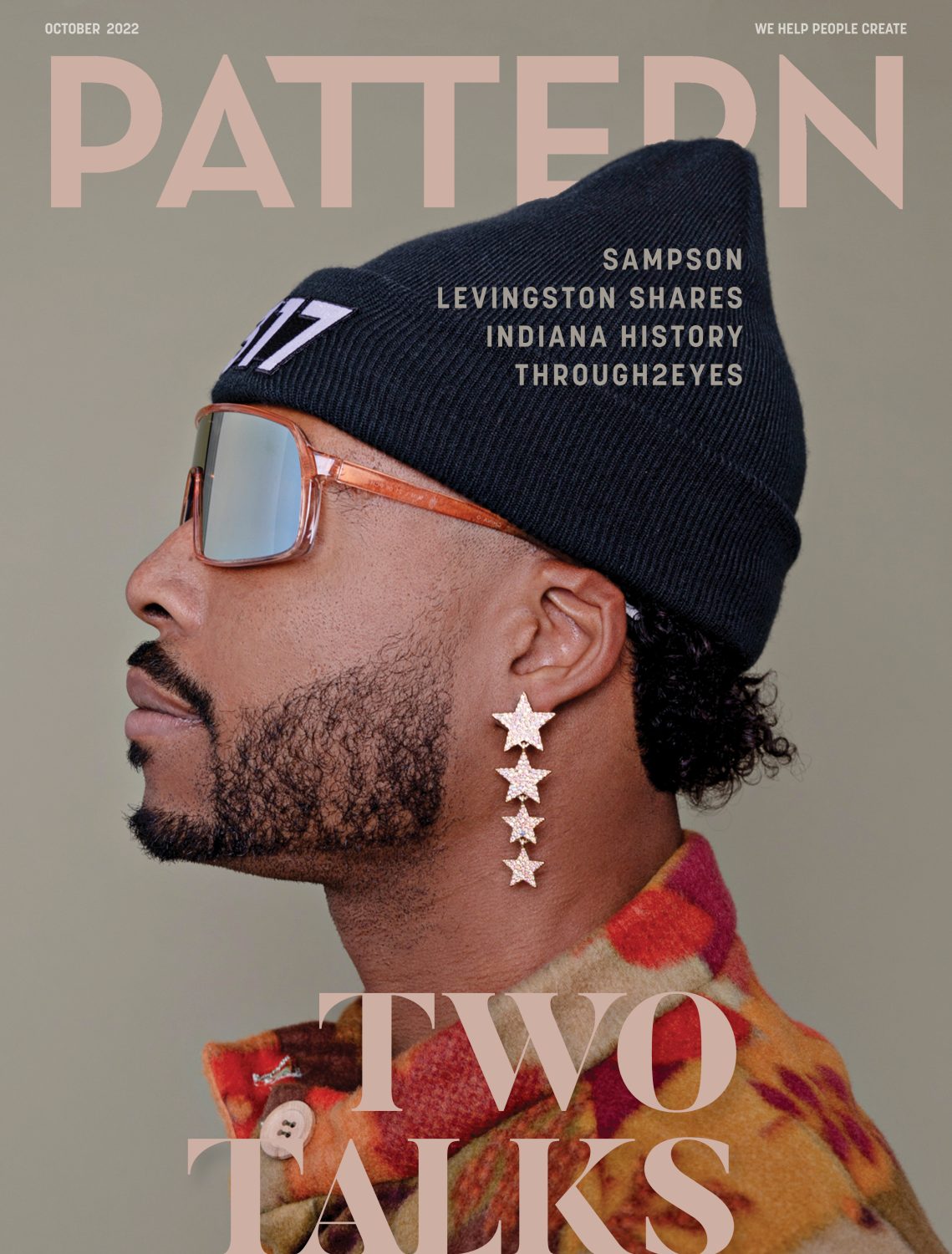
Cory Cathcart: I read that you started this as a blog—tell me about that transition from blog to what you are doing now.
Sampson Levingston: When I graduated college, I felt this big void. I was a college athlete and I felt this big void as far as connectivity to people. I felt that through sports a lot. I didn’t feel that in the real world. I felt like everybody was on their own. Through writing, and then eventually writing about Indiana history, I started to connect to different people in different places like they were my teammates. I wanted to tell that story in a unique way. I started writing and making videos about history for free and for fun. That was really how it started—as a way for me to connect with the people who live here through history and something that’s factual and we can all understand.
CC: Why did you choose the name Through2Eyes for your brand?
SL: In college, my football number was two. All my friends called me two. When I started this blog I wanted to give people perspective through my own eyes, and through two sets of eyes—whether that’s my opinion and your opinion, or looking at two different sides of one thing. So looking through two eyes, looking at this side of the situation, and looking at this side situation. It’s combining a lot of perspectives. Collecting perspectives and then sharing them is the root of what I do.
CC: What is your favorite thing that you’ve learned about Indianapolis?
SL: Everything and everybody’s here, and they’ve always been here in their own unique way. Their stories may not have always been told, but if you’re wanting to tell that story you can. When I did tours for the BUTTER Art Fair, all we did was walk around the Stutz building. We just walked around the block, and for thirty minutes I shared a story of Black history, native history, women’s history. Any story that you want to tell, you can tell using Indiana history. There’s so much rich history here. If you look for it, you’ll find it.
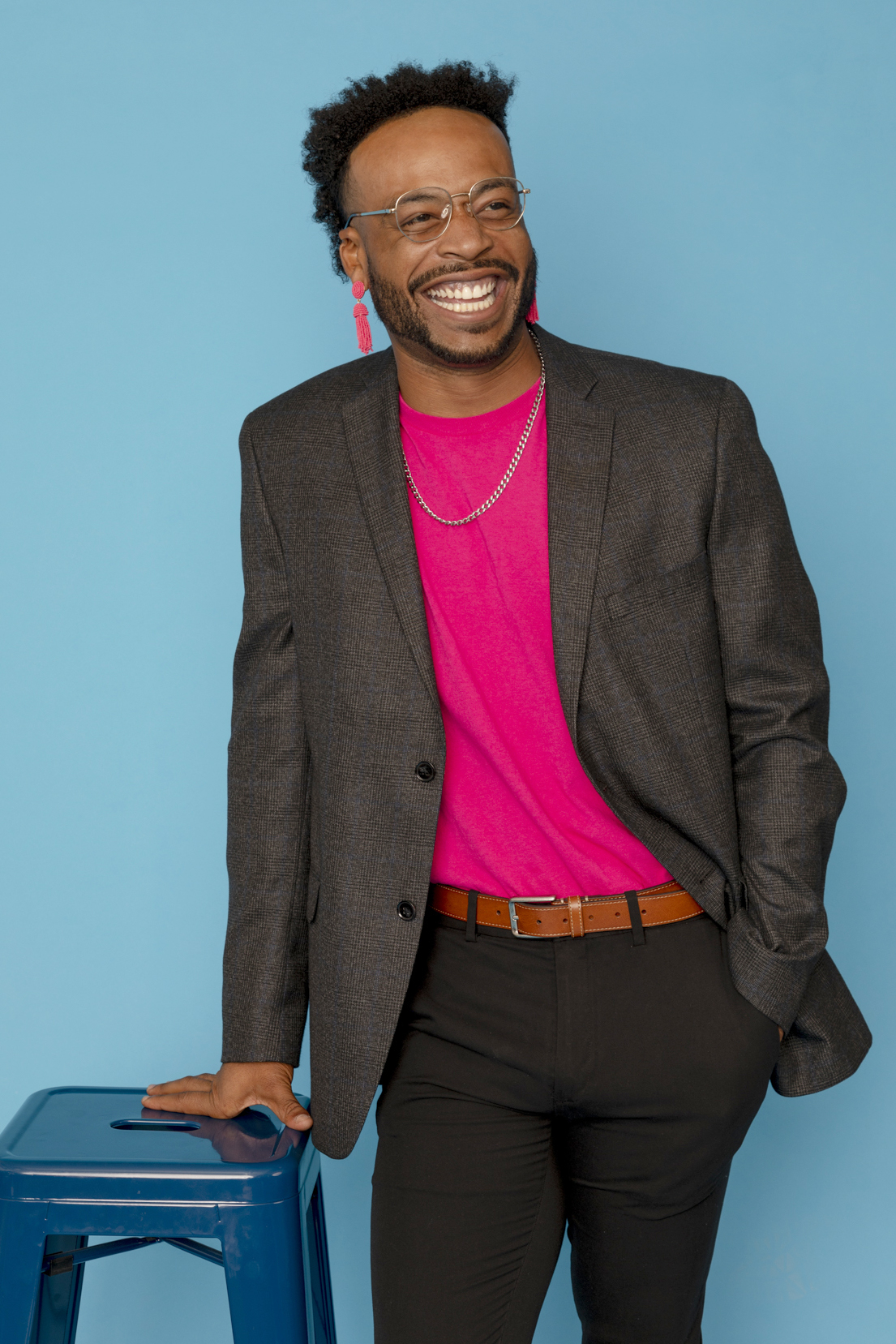
CC: Do you have specific themes that you focus on?
SL: At the core of everything I do is Black history. From there, I like to focus on women’s history and Native American history. With it being Latin Heritage Month right now and Hispanic Heritage Month, I’m trying to work on how to incorporate more of their history. I started doing more LGBTQ history in Fountain Square with my recent tour. I’m looking to tell stories about Black people that incorporates all of Indiana’s history. For example, if you like the Indianapolis 500, that’s great. Then let me tell you about the Black drivers that were racing at the fairgrounds in the 1930s. Black history is the core of everything and that’s what adds value to it.
CC: Who’s your favorite Indiana historical figure?
SL: I don’t know. There’s so many cool people that have shaped our history. It’s a tough question. I don’t want to leave anybody out. Seeing people that look like you achieve great things through their creative minds and creative talents is cool. Whether that’s Wes Montgomery playing the guitar, Mike Epps cracking jokes, or Oscar Robertson playing basketball—they are all expressing who they are and where they’re from, which is Indianapolis, and I think that’s cool.
CC: I want to talk about your Hawk ‘n Talks. This is two parts. First, how do you keep the kids interested? And second, why birds?
SL: Two great questions. Kids are excited about whatever you’re excited about. Kids don’t know what’s exciting. If you get excited, they’re excited. If you go in there and you’re clapping, you got a basketball, and you have high energy, they respond to that. Kids respond to enthusiasm. It’s one of the easiest forms of communication. Looking excited makes the baby excited, right? We can do that all the way up. I go in there with a high level of energy talking about things that they’re familiar with, whether that’s sports or nature, and I ask them fun trivia questions. It’s cool to see their energy for history. I think it’s just having a high level of energy and enthusiasm. They match that. One quick story—my very first Hawk ‘n Talk that I did, I was talking about the bricks on the Motor Speedway and how that used to be a brick road. One of the girls started mimicking like she’s on a brick road, and then I started doing it, and then all the kids started doing it. Now they know what it would have been like on a brick road at the Indianapolis 500.
Why birds? There’s so many cool birds that fly around. It’s appreciating where you are—these trees, these birds, they’re in Indiana with us, and it’s cool to learn about them as you’re learning about the place. And reminding the kids to look up. It’s about reminding them that there’s cool things happening all the time for free. And that’s nature. So look around.
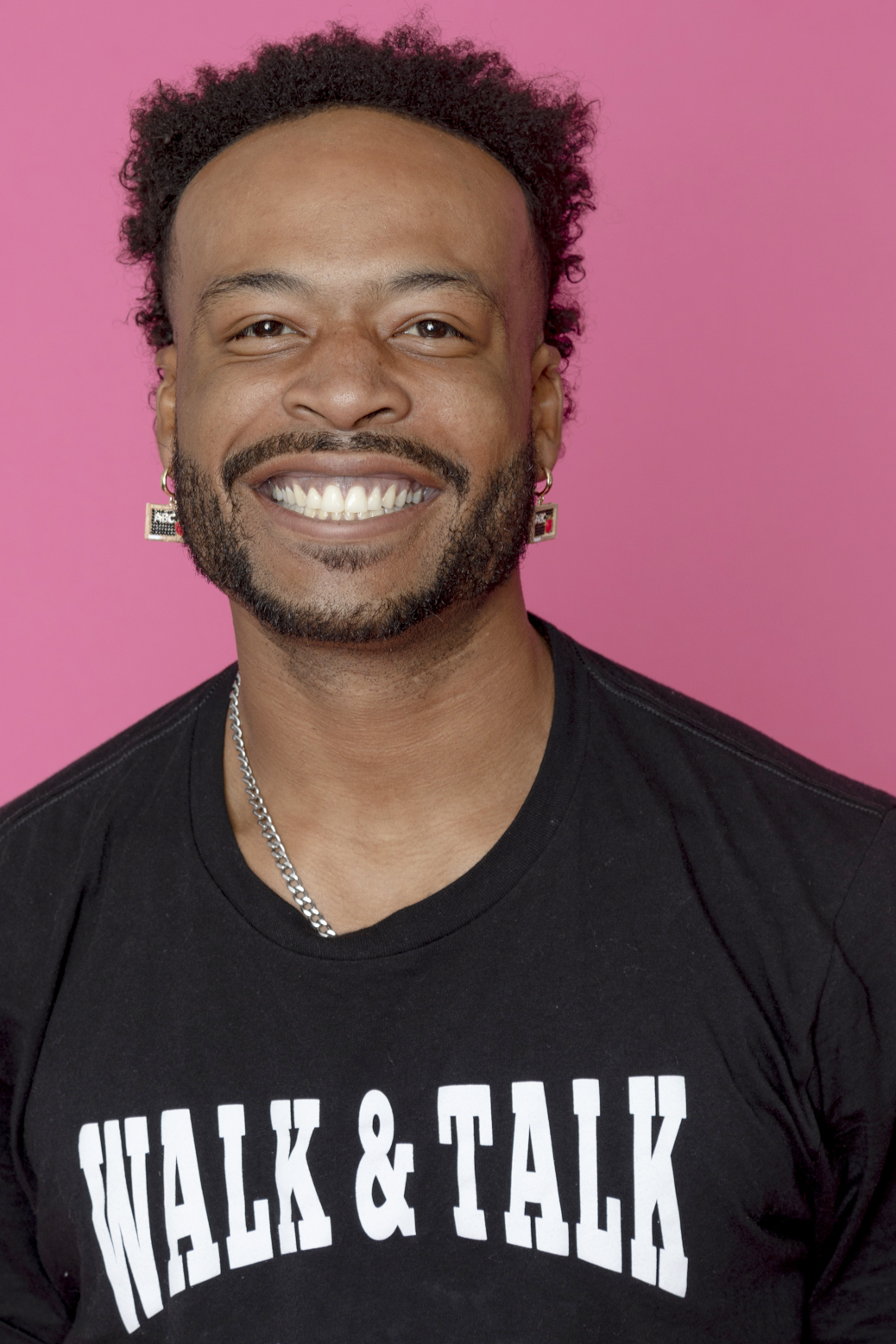
CC: Did you like history as a kid or did you become more interested as you got older?
SL: I’ve always been interested in knowing why things are the way they are and history has been the best way for me to answer that. I want to know why a street is named. Why is it Oscar Robertson Boulevard? Who’s Oscar Robertson? The town where the speedway is—why is it called Speedway? What is this about? I’ve always wanted to know why. As you look into the reason why the Walk ‘n Talk came about, it was during the protest. People are protesting and people are angry, and people wanted to know why. Why are things the way they are? Why are people this mad? Why are people mad that people are this mad? Well, we look at history and it’ll tell us. For decades, there’s been groups of people that have been treated terribly unfairly, and it’s not like it’s a rumor, you know? It’s real. Why are certain groups of people less fortunate than others? It’s not just the luck of the draw. There’s been policies put in place that explain that. If anyone wants to know why Indianapolis is this way, history tells us. How can we explain what’s happening, but also allow people to realize that they can influence what’s going to happen? That’s always been at the forefront of my mind.
CC: What do you love most about giving tours?
SL: Meeting the people. Hearing their different stories, what they like, what they’re connected to, and where they’re from. And how they heard about the tours, because I don’t advertise. It’s such an organic nature and feel to the tours. I don’t beg people to go on them and I don’t force them. The tours are my truest element. When people come and see me do that tour, they’re seeing me exactly as I want to be seen. Whoever wants to come and see that, and get engulfed in that experience with me—that’s what I look forward to.
